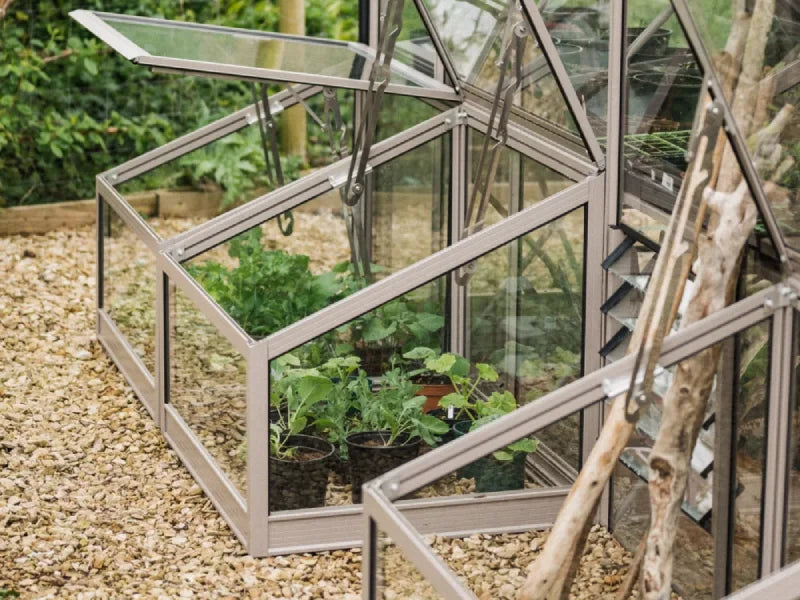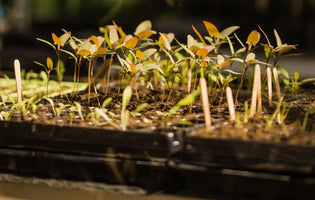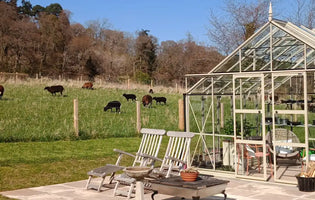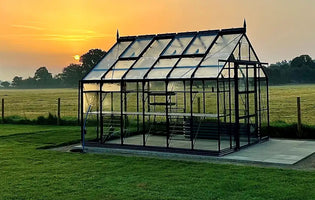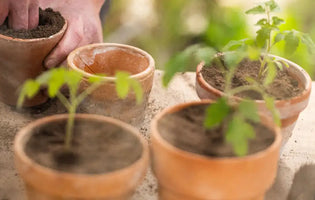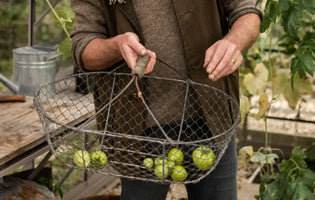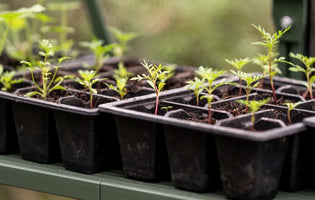Request a Brochure
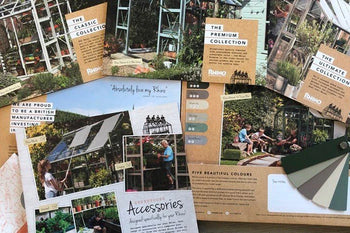
There’s no better feeling than preparing a delicious meal with your homegrown harvest. Growing your own vegetable patch is one of the most rewarding things a gardener can do. You don’t need a huge amount of space to grow the essentials, and plenty of hardy veggies will grow fuss-free with minimal maintenance. Read on for Rhino Greenhouse Direct’s tips on how to get your patch started.

What to Plant & When to Plant it
As with your border perennials, when you choose to plant your veggies is key to them thriving. Different vegetables must be planted at different times of the year and, in turn, harvested at different points.
Plant in the spring
Most vegetables will need to be planted during the early spring. You can sew staples like radishes, carrots, beets and potatoes during this time. Whether you plant them straight into the ground or cultivate them in the greenhouse first depends on the type, so it’s a good idea to read the seed packet before you start.
Plant in late spring
As the weather warms up, you can start planting root veg for the autumn. This is the time to get your pumpkins and squash in the ground, which can be harvested to make plenty of tasty soups after the summer. This is also when you can start thinking about planting things like cabbage, lettuce and broad beans.
Plant in the winter
Yes, you can continue to grow during the colder months. Hardier veggies such as broccoli and sprouts will withstand the cold. Parsnips and cabbage can also be planted during this time.
The Importance of Preparing your Soil
Before you start planting, it’s time to learn about preparing your soil. The healthier the soil, the healthier the harvest you’ll get, so it’s worth investing time and effort to get this right.
For growing vegetables, you’ll need an open site with free-draining soil. This means the soil can retain moisture, encouraging the roots to grow deeply.
When preparing the soil, you’ll need to mix it with organic material like compost or manure – we’ll go into this further below. This will ensure your veggies get all the nutrients they need to thrive.
After you plant, you may need to cover the soil with plastic or garden fleece to warm it up. Alternatively, if you start sewing in the greenhouse, you’ll need to acclimatise your crop to the outdoors before transferring it to the ground soil.
Top Tips for After Planting
Planted your crop? Here are our tips for keeping it thriving.
When to Water
Watering is super important to keeping your crop healthy. When you sew seedlings, they’ll need daily watering to encourage them to grow. Once established, they’ll need a lot less water. It’s better to water your patch well once per week than once a day. Always water close to the root and avoid soaking the foliage. You can check the moisture in your veg patch by digging down into the soil – the top layer may appear dry whilst there’s still moisture close to the roots.
Top tip: rainwater is better for your veggies than tap water, so creating a rainwater store is a good idea. You can then use a watering can to distribute this over your crop.
How to Fertilise
Keep your soil well-fertilised with mulch. Mulch is organic matter and can come from the kitchen or the garden. An easy and cost-effective way to ensure you always have plenty is to start a composter, this can include veg peelings and grass clippings. Feeding your patch helps to give it essential nutrients and also helps it to retain moisture.
Keep Pests at Bay
Bugs, birds and animals might find your veg patch just as tasty as you do. There are a few ways you can keep them out, so you can keep your veggies all for yourself.
Use cages for crops that grow above ground. You can use mesh to cover the tops and prevent birds and bugs from getting into them. Using raised beds can help prevent ground bugs from getting into your crops. You can also try slug and insect traps and bird scarers to deter beasties from your veg.
When to Harvest
When you harvest will depend on the vegetables you have planted. It’s a good idea to keep a veg calendar so you know when you can dig up what.
As a general rule, you can harvest vegetables that grow in the ground when the top plant turns yellow or brown. For fruiting veg, you should be able to tell by the skin colour – a nice, even shade means they’re ready to be picked.
How to Store your Harvest
Once your hard work has paid off, you’ll want your harvest to last as long as possible. Here are some tips:
- Bring it indoors or leave it to ripen in the sun if needed.
- Chill veg like beans and cucumbers in the crisper drawer
- Wrap leafy greens in damp paper towel to help them retain moisture.
- Keep pumpkins, squash and root veggies in a cool, dark place.
- Only wash your veggies when you’re ready to eat them.
- If you have a surplus, why not try pickling some?
There you have it; you’ll soon be cooking garden-to-table meals that taste even better for being grown by your green fingers.

